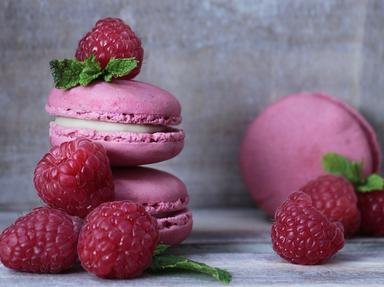Quiz Answer Key and Fun Facts
1. Let's start with some hors d'oeuvres, shall we? French onion soup is typically served in which way?
2. Although not necessarily French in origin, what 'E' food seen here has a French name?
3. In the 17th century, monks had trouble making champagne and had to wear masks in the preparation process. Why is that?
4. How many French 'mother sauces' are staples in French cuisine?
5. Which of these herbs would *NOT* be found in the mixture known as 'Herbes de Provence'?
6. You would likely need glass of fine wine with your French dinner, but which of these did *NOT* originate in France?
7. Which of these French main course dishes would *NOT* contain meat?
8. A cheese course, one may be surprised to find, comes before dessert. Which of these would be considered a French cheese?
9. Macarons are a sandwich dessert made with which of these as their cookie?
10. Our digestif tonight will consist of a recipe passed down through the generations by the Order of the Carthusians. They were responsible for making which of these liqueurs?
Source: Author
kyleisalive
This quiz was reviewed by FunTrivia editor
jmorrow before going online.
Any errors found in FunTrivia content are routinely corrected through our feedback system.
